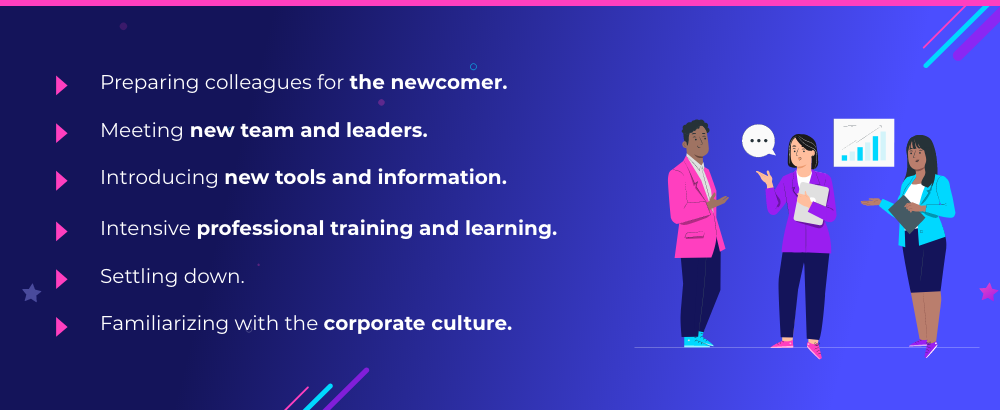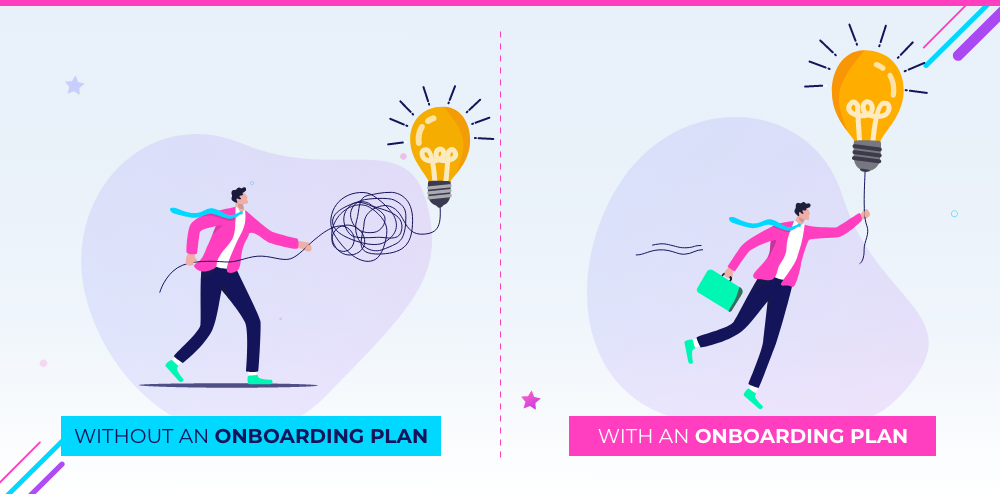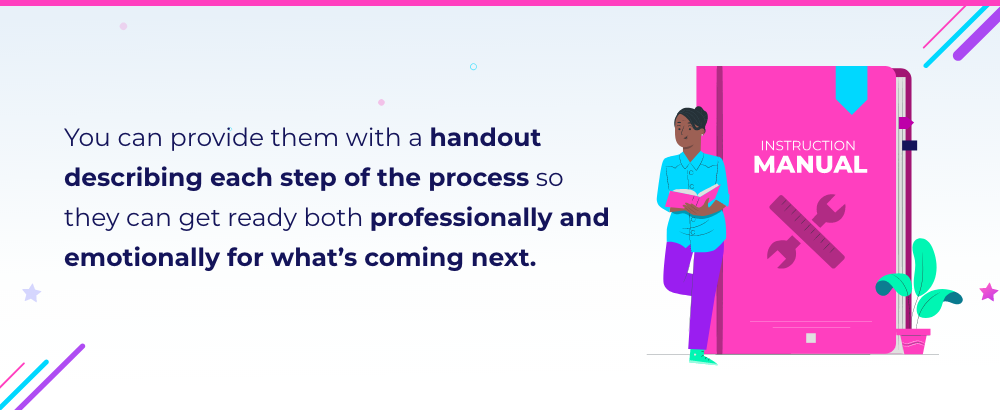Top-5 Tips for a Successful Onboarding Process
Written by María Eugenia Raffaele
Did you know that a successful onboarding process can be one of your most effective retention tools?
From excitement to happiness, great expectations, and even a pinch of anxiety, the onboarding process is one of the most crucial moments in an employee’s professional life. Why? Because this is when you and your new talents start navigating the future together.
So, these are our two leading premises on onboarding:

What is Onboarding?
At its core, employee onboarding is a turning point in the recruitment process where your new hires develop a sense of belonging and learn everything they need to get fully started in their new role.
What does it imply?

Why should you care about onboarding?
Making this process memorable, engaging and effective can be one of the greatest challenges for HR…
First impressions matter, which is why when people’s onboarding doesn’t meet their expectations, they are likely to quit in the near future.
Plus, the cost of poor onboarding is high: Replacing a new hire leaving your company too soon represents from 50% to 60% of their annual salary, and this can also negatively affect your seasoned employees’ morale and level of engagement.
But, don’t worry. We want to make things easier for you. Remember we said it’s all about human experience? Great, so keep that in mind as you check out our top-5 tips on how to best welcome your next star.
1. Be Proactive: Have an Onboarding Plan
Here’s something to think about:
- Only 12% of employees claim their onboarding was positive
- 22% of turnover happens during the first 6 weeks.
You’ve probably spent considerable time and effort attracting and selecting your talent, right? So, how wise would it be to risk the cost of losing them simply because you don’t have an onboarding plan?
When your HR team is proactive and truly cares about the employee journey, it plans ahead and tackles needs before they come up along the process.

Onboarding plans vary from business to business and from culture to culture, and there isn’t a strict must-follow list of steps you have to stick to. In fact, the more flexible and adaptable you are about it, the better. So, feel free to plan the process according to your needs, but do make sure you act proactively if you want to make the experience successful and rewarding for everyone involved.

Something to think about…
Throughout my life, I’ve heard so many friends and colleagues complaining about their onboarding experiences. One of them even told me once that they didn’t know she was new on the team. Can you believe it? She sounded so disappointed and dreaded going back to the office the next day. No wonder…
Lesson learned? A new hire is like welcoming someone to your family, and having a plan is the very first step towards making their process valuable and memorable.
- New employees will notice your interest and will feel welcomed and motivated right away. (Your onboarding plan says so much about your culture.)
- The learning experience is smooth and everyone around the office plays a key role in it.
- A plan allows you to restructure and reinforce your current practices.
- You won’t be causing confusion or extra work for your seasoned teams.
2. Set Clear Expectations and Goals
When do you start discussing your mission, direction and objectives with your new employees? If you think this takes place during their onboarding, let me just say you’re going the wrong way… People’s onboarding experience starts during their recruiting process. In fact, that’s when you truly start engaging them.
When you kick off a successful recruiting process by getting to know your candidates, welcoming them to your culture, and setting clear expectations, people already start having a clear direction and feel part of the vision of the company right away.
Believe me, if you wait until the onboarding process to do this, it’s probably too late already, So, right from their recruiting experience remember to:
- Make sure your corporate goals are aligned with your new employees’
- Go over expectations and responsibilities together
- Discuss their future ongoing learning and training – this will make them feel you are willing to see them grow in your company.
3. Take a Walk in Your Candidate’s Shoes
Turning new hire onboarding into a human experience implies putting your new talent first along the process.
Human-centric cultures will find this point familiar. However, many companies, even those with great cultures, sometimes lose track of how overwhelming the experience can be for the new candidate. So, make sure you go over these 2 key reminders:
- During the process, new employees are a bundle of emotions. They want to absorb everything, get to know their colleagues, and make an impact at the same time. That’s mind-blowing! So acknowledge all their emotions and walk with them step by step.
- Don’t dump too much on them. This is one of the most common mistakes companies make. Your team can be warm and welcoming, but if there’s too much to take in within a week or two, the experience can easily cause early burnout. So walk hand in hand with them and pace the new hire.

4. Use Technology to Enhance Connections and Engagement
One of the top trends in the world of remote work is digital onboarding. And, let’s face it, an unsuccessful remote process can turn out to be impersonal and even lonely. So, embrace technology to foster engagement and bring people together as soon as possible!
- Peer-to-peer communities bring new and seasoned employees closer. Adopting collaborative platforms like StarMeUp, for instance, can provide a sense of teamwork and help new talent become part of your company’s culture, core values, and mission right away.
- Welcome the new hire with an engaging remote team building activity to break the ice and introduce the team. This way, you’ll get everyone on board and excited about meeting the new talent.
- Don’t assume your plan is unchangeable. Some weeks after their experience, send people apulse surveyto find out what their employee onboarding was like. This way you’ll continue making adjustments and improving your process!
Technology is an essential requirement in today’s world of business, especially in remote and hybrid work models. Make sure you adopt the right technology and make it available for new employees. This is key to enhancing retention and reinforcing your commitment to their professional growth.
5. Does Training Finish with The Initial Onboarding? No!
One of the main reasons why people lose motivation in their roles is because they need follow-up and further training, but the company doesn’t respond to their needs. So, keep in mind:

Looking for Inspiration?
At Globant, one of their strongest statements is that every talent can be developed and all individuals can make a difference.
During their virtual recruiting and onboarding they do everything in their power to keep new people engaged and connected every step of the way. Onboarding new employees is seen as an ongoing process, and they leverage technology to make their experience more enjoyable and productive for everyone.
And why do they care so much? Simply because onboarding means welcoming a new member to their family.
To conclude, let me just say times and people change. So if you truly want to retain your talent and make them love your culture, be sure to change and reinvent yourself too. Few last takeaways?
